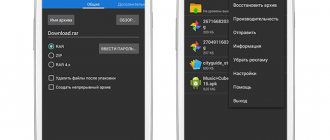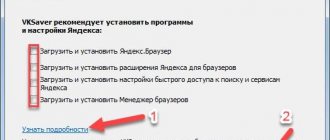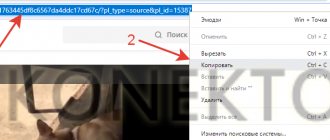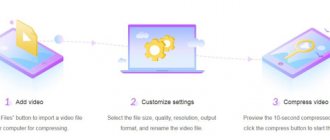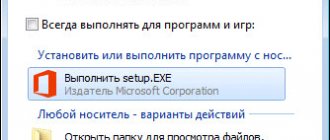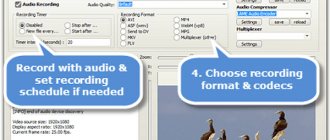The range of programs designed to work with video files is very diverse. A wide selection of such programs allows you to choose a tool that is suitable in terms of functionality and convenience, both paid and free. In this article we will talk about the very popular and noteworthy free program VirtualDub, the capabilities of which are not inferior to similar analogues.
Downloading and unpacking the program
VirtualDub begins to pleasantly surprise the user even at the initial stage of its operation: the program does not require any installation, since after downloading the archive with the program on the PC, to open it, just launch VirtualDub.exe with a standard double-click on the name. By default, the program has built-in codecs that allow you to perform basic tasks of video editing, editing, compressing and converting files, provided it is downloaded from an official source. As a disadvantage, the inadmissibility of working with files in mp4 and MOV formats is noted, but this oversight is eliminated if you additionally install codecs to interact with these components, detailed installation instructions for which will be described later in the article.
Hotkeys
For the convenience of working with VirtualDub, it is recommended to learn how to control functions not only by selecting the required command using the mouse, but also by using “hot keys”, which significantly speed up actions. The program is initially equipped with many “hot keys”:
- To open a file, you need to hold down the Ctrl and O buttons simultaneously.
- To move through the video, you can use a combination of the Shift key and the arrow key on the keyboard, which will allow you to move frame by frame.
- The combination of Alt with an arrow allows you to move over a period of fifty frames.
- To record from the screen, use the F6 key, which is responsible for starting the “capture”.
- You can stop capturing with the Esc button.
- You can delete a selected object, as in any other program, using the Delete key.
- The F7 button is responsible for saving the edited video.
In fact, this is only a small part of the working keys and shortcuts, but there is no point in memorizing the combinations initially: most of them are written in the sub-items of the menu settings, opposite each of the positions in the drop-down list, which will allow you to learn the most important “hot commands” over time . Let us further understand in detail how to carry out the procedure for capturing video from a monitor, since it is for this purpose that the utility’s resources are most often used.
Video Capture
Screen video recording is one of the features of VirtualDub. This function is implemented in many highly specialized programs, but VirtualDub copes with the task at a very high level, which allows it to be used for this purpose. You need to write down, for example, detailed instructions on how to work in a particular program, record achievements while completing a game, or for other purposes. Registration is carried out according to the following regulations:
- After opening the main program window, through the “File” tab, launch the “Capture video to AVI” process.
- In the window with capture settings that opens, go to the “Device” section, where you activate Screen capture.
- The capture area will open, with small parameters of the captured image, which can be corrected by making changes in the settings. To do this, you will need to go to the “Video” tab, where you select the “Set format” option.
- In the window that opens called “Setting video format”, you will need to check the box next to the inscription “Other size” at the bottom of the screen, writing in the free fields of this section the required resolution for correct video recording. In the “Data Format” section, leave the 32-bit ARGB video format without amendments, or select it if a different format is activated by default, and approve the introduced innovations with the OK button.
- After these manipulations, several windows will open that are responsible for previewing the recording. It is advisable to close them so as not to overload the PC. Windows are closed using the “Do not display” command in the “Video” tab.
- Next, by calling up the compression settings with the C key, you need to set the codec for the recorded video in order to minimize the volumetric parameters of the video. The user will be able to select a codec according to their needs from the proposed list, in accordance with the quality requirements of the source video material. The selection is confirmed with the “OK” button.
- After this, the user needs to determine the storage location of the recorded material and specify a new file name, which is done in the window called up by the F2 hotkey. The data is confirmed by clicking “Save” in the same window.
- Now you can proceed to recording the material: to do this, you will need to select the “Capture video” option in the “Capture” tab. The Capture in progress notification in the top line of the program window will inform you that video recording is in progress. The recording process is stopped by selecting the “Abort Capture” command in the “Capture” section.
After recording, you can close the program without fear for the safety of the video, since the video object will automatically be placed at a pre-specified address under a user-specified name.
How to add subtitles to a video file
After you have opened the VirtualDub program, in the “File” menu => “Open video file...”, in the Explorer window, select the video file to which you will add subtitles.
In the “Video” menu, click on the “Filters...” item (this item is active only if “Full processing mode” is enabled). In the window that opens, click on the “Add…” button.
In the new “Add Filter” window, find and select the “TextSub” filter, which supports different types of subtitles. After this, click on the “OK” button.
In the “Filters” window, click on the “OK” button.
If you now proceed to save the file, the final video file will be gigantic in size.
In order to avoid this, you need to go to the “Video” menu, and then click on the “Compression...” item. In the “Select compression type” window, select the codec (usually Xvid or DivX), and then click on the “OK” button.
You may also be interested in:
- Movavi Video Editor - video editing program
If you need to change the quality of the output video file, then click on the “Change” button.
In the new “Xvid Configuration” window, when you move the slider, you can try to improve the quality of the final video file.
In the “File” menu, click on “Save as AVI...”. In the Explorer window, select the location to save the video file and its name. The video processing process begins.
After processing is complete, you receive a video file with built-in subtitles. The quality of the video file after processing will be slightly worse than that of the original video file.
Removing audio from a video file
Sometimes, when working with video files, it becomes necessary to remove the audio track, which VirtualDub allows you to cope with. To complete this task, you will need to perform the following simple manipulations in the following sequence:
- Select a video file from which the performer needs to remove the audio track.
- Go to the “Audio” menu section on the horizontal taskbar at the top of the screen, where in the drop-down list activate the “No Audio” mode.
- Save the modified video file by pressing the F7 key, followed by specifying the area where the object will be saved and its new name, and confirming the command with the “Save” button.
The program will automatically save the file without an audio track, which will allow you to work as you wish in the future.
Capture and record video in VirtualDub
Video capture, or video capture, means the process of digital conversion of video signals received from various external devices: video cameras, tape recorders, web cameras, TV tuners, monitors, etc.
Capture is carried out using a computer with a video card, or a video recorder, on which special software is installed that provides communication with the source device.
The captured video is recorded in a file on electronic media for further processing or editing. At the same time, the video stream is compressed using codecs to save disk space.
The VirtualDub video editor captures a video signal, including analogue, and then writes it to a *.avi file from source devices for which drivers are installed in the operating system. Such devices can be TV tuners, web cameras, monitors (capture video from the screen), etc.
VirtualDub interface in capture mode
To switch the program to video capture mode, you must select ...Capture/video in AVI... in the File menu - screenshot 1.
Screenshot 1.
The program switches to video capture mode.
After this, the VirtualDub program window opens in capture mode.
Screenshot 2.
The “File” menu section in capture mode, where you can set the captured file, merging system, distribute disk space, etc. On the right there is an information panel about the current status of audio/video capture (see screenshot 3).
Screenshot 3.
Information panel located on the right side of the capture program window.
The information panel located on the right side of the capture program window (see screenshots 2 and 3) shows the audio and video status during capture. It can track data such as:
- Frames.captured – total number of captured frames;
- Total.time – total operating time;
- Total.file.size – total data volume;
- Disk.space.free – how much space is left on the disk;
- CPU.usage – CPU resource usage;
- Spill status – current status of capturing video segments;
- Video: Size – total amount of video data recorded on the disc;
- Video: Average rate – the overall rate of video frames from the source (should be close to the nominal rate to avoid signal desynchronization;
- Video: Data rate – the speed at which data is written to the disk;
- Video: Compression – overall compression ratio
- Video: Avg frame size - average size in bytes of each video frame written to disk;
- Video: Frames dropped – the number of discarded (cut) frames during program operation;
- Video: Frames inserted – number of inserted frames;
- Audio: Size – total size of audio data recorded on the disc;
- Audio: Average rate – average speed of the audio stream;
- Audio: Relative rate – relative speed of the audio stream;
- Audio: Data rate – data transfer rate;
- Audio: Compression – overall compression ratio;
- Sync: Video timing adjust – video synchronization adjustment;
- Sync: Relative latency – relative delay between arrivals of audio and video streams;
- Sync: Current error – expected synchronization error.
Below, in screenshots 4 – 7, are the main elements of the VirtualDub interface in the video capture system with detailed explanations.
Screenshot 4.
The “Device” menu section, where you can select and configure the source device for capturing video signals.
Screenshot 5.
“Video” menu section for setting the captured video signal. Here you can enable preview and compression operations, set the format and size of frames, trim edges, improve the quality characteristics of the received signal (reduce noise, increase blackness or whiteness), connect filters, etc.
Screenshot 6.
“Audio” menu section for setting up the captured audio signal. Here you can connect a source device (for example, a microphone), enable audio compression, set the format, measure the signal, configure the system mixer, etc.
Screenshot 7. “Capture” menu section for setting up and starting (stopping) the audio/video data capture mode. Here you can start, stop and test the capture process, set a timer, configure a schedule, system data (for example, the amount of disk space), capture parameters (frame rate), display the current status on the information panel, log, enable multi-segment capture, enable the display of elements interface, synchronization, etc.
Editing video files
VirtualDub also has decent functionality for editing video files. To work with an object, you will need to initially load it into the program, which is done through the “File” menu, followed by activating the “Open video file” position, or by simultaneously pressing the Ctrl and O keys, and select the object on the PC that requires editing, confirming the command "Open" button. If the manipulation is performed correctly, two identical images will open in the main window of the utility, where the first is the original version of the video, and the second is a modified version, which will indicate the possibility of further work with the object. Since the functionality of the program is multifaceted, we will consider in detail only some of the most popular manipulations, on the basis of which you can acquire skills in working with the utility, which will allow you to carry out more complex tasks in the future.
First, let's figure out how to trim a video file in VirtualDub or cut out a fragment needed for further work. For this purpose, it is enough to use the scale under the opened video and the tools below it: by moving the slider in the form of a notch, the user marks the beginning and end of the section intended for deletion or saving. If trimming and subsequent deletion of a fragment is required, just press Delete on the keyboard after setting the boundaries of the area. If you need to save an object, you need to select the “Save as AVI” command in the “File” section, specifying a name for the selected object.
The program also allows you to combine several videos into a single whole, which is done by adding new fragments to the main video file through the “Add AVI segment” item located in the “File” tab. The added segment, or several videos, will automatically be “attached” to the main video in the loading order. The program's resources also allow you to correct the situation when the video file has the “wrong” location: upside down or filmed at an angle that is inconvenient for viewing. You can rotate the image as follows:
- Through the “Filters” item in the “Video” menu section, select the “Add” setting.
- In the “Add” section, activate the Rotate filter if the rotation is standard – 90 or 180 degrees. If the degree of rotation is not standard, you will need to select the Rotate2 task, where you can set an individual video rotation schedule.
- After changing the image rotation angle, all that remains is to confirm the command with the “OK” key, set the file to “Full processing mode” in the “Video” section and save the object.
The program also allows you to create GIF animation of a video file or its fragment. Processing using animation is carried out according to the following regulations:
- First, the video that the user intends to convert is loaded. If it is necessary to animate part of the file, trim it according to the instructions described above.
- If the file has a high resolution, it will need to be reduced to reduce errors or processing time. To do this, go to the “Filters” section in the “Video” tab, and then activate the “Add” option in the right area of the window.
- From the proposed list of filters, select the Resize item, which is responsible for changing the size.
- In the window that opens, set the first line to “Absolute”, in the “Aspect Ratio” position – “As Source”, and confirm the action with the “OK” button at the bottom of the screen.
- In the next window, the program will display the user-specified filter, opposite which you will need to check the box and confirm the installation with the “OK” button.
- At this point, the compression of the image can be considered completed, the resulting result will be displayed in the preview window.
- Next step: change the frame rate. To complete the task, you need to go through the “Video” position to the “Frame Rate” section, where in the “Frame Transfer” line set the value from 10 to 15.
- Saving an animated object is done by entering the “Export” menu through the “File” tab, followed by going to the “Create GIF...” item, where in the settings window you will need to set the name of the output video file and parameters for playing the animation.
- All that remains is to click on the three-dot icon opposite the file name, which will allow you to select the location of the finished object, and apply the “Save” command located at the bottom of the screen.
Typically, the process of converting a video file does not take much time; the user can view the result of the manipulations performed by opening the finished file in the folder where it was saved. Having considered the main options and capabilities of the program, we will move on to the stage of studying the nuances of saving a video file, including when it is supposed to change the extension of the object.
How to combine video files into one video file
With VirtualDubMod you can combine multiple video files into one video file. In this example, I'm using a movie that consists of two video files with the extension ".avi" and these parts are not movie episodes. Previously, such films were often recorded on several CDs.
To do this, open the VirtualDubMod program, in the “File” menu => “Open video file...”. In the Explorer window, select the video file to which you will attach another part of this movie, and then click on the “OK” button.
In the "Video" menu o. By default, when starting the program, the Full processing mode item is always activated.”
If you use this mode, the entire encoding process will take a very long time, and the size of the final file will increase hundreds of times. In this case, your computer may not even have enough free space on your hard drive for the final file.
With “Direct Stream Copying”, the video file is not re-encoded and the video quality is not degraded, which usually happens in the full processing mode.
In the “File” menu, click on the “Add AVI segment...” item. In the Explorer window, select the second video file, and then click on the “Open” button.
Next, go back to the “File” menu, and in the context menu click on the “Save As...” item.
In the window that opens, select the file name (you can select any name and then rename this file), and then click on the “Save” button.
In a new window you see the process of processing video files.
As a result, after some time, you get a movie consisting of one video file. When comparing the original video file and the merged video file, you will see that the video quality remains virtually unchanged.
If you need to merge several video files, then first merge the first video file with the second, and then add a third video file to the merged video file. Add the following video files to the merged video file in the same way.
Saving the edited video
The final stage of the editing work is precisely saving the object, which will allow you to further manage the video file for its intended purpose. In a situation where a video file needs to be saved in a standard format, the process is not difficult; it consists of performing the following simple manipulations:
- In the “Audio” and “Video” sections, activate the “Direct streaming copying” option one by one.
- In the “File” tab, select the “Save as AVI” task.
If the video file needs to be saved in a different format, the task becomes a little more complicated, but it can also be done. For example, if you need to save a file and at the same time transcode both audio and video, you will need to do the following:
- In the “Audio” section, activate “Full processing mode”, and in the “Compression” item, set the desired codec for sound, for example, transcode audio to mp3.
- Perform similar manipulations in the “Video” section, setting the video file to the required format, for example, the popular DivX.
- Save the video after setting the quality of the final video file.
The process of saving and simultaneously converting a video file may take a long period, the duration of which proportionally depends on the specified settings and PC performance. More difficult in the VirtualDub program is working with mp4 and MOV files. In order to be able to work with these formats, you will have to download special plugins:
- First, you should check in the root directory of the program for the presence of folders named plugins32 and plugins64. If the specified objects do not exist, they will have to be created manually.
- Next, you will need to find the FccHandler Mirror module on the Internet, designed for VirtualDub software, and download it to your PC.
- After this, you need to extract the Quick Time.vdplugin and Quick Time64.vdplugin objects included in the archive into plugins32 and plugins64, respectively.
- All that remains is to install the ffdshow codec according to the Installation Wizard manual, having first downloaded it from the network, then activate VirtualDub and try to open a video file with the MOV or mp4 extension. The object must be compatible with the OS bit depth.
If all manipulations are performed correctly, and the working tools are downloaded from reliable resources, in the future you can not only work with files in standard formats, but also save the processed video in mp4 or MOV according to the instructions described above.
VirtualDub how to save video? VirtualDub video compression.
After all operations with the video have been done, all that remains is to save it correctly. For many people, problems begin at this point.
Conservation can be roughly divided into 2 types:
1. Save in original quality , i.e. We do not convert either the audio or the video itself. In this case, the file is saved very quickly. Now let’s talk about how this is done visually.
Select audio/direct streaming copying.
Select the video/direct streaming option.
File/save as avi.
2. We save it in a different quality , and you can convert both audio and video, or just audio, or just video. Video compression can take quite a long period of time.
Here we will consider an option in which you will convert both audio and video. If, for example, you want to leave the sound unchanged, then you just need to select the option - direct streaming copying.
Select audio/full processing mode.
Then audio/compression. Now you need to select the codec into which your audio track will be converted. In the screenshot, the choice is made in favor of one of the most popular codecs.
Then the same with video: video/full processing mode, video/compression.
From the list, select one of the proposed codecs and click change. In the picture, the choice was made in favor of one of the most popular codecs, Divx.
After this, all that remains is to select the video bitrate, i.e. quality with which to compress. Everything on the screen is by default.
Now you can start compressing the video: file/save as avi.
A window similar to this should appear. The compression time can be quite long. Depends mainly on the power of the computer, and the codecs and filters that you have chosen.
Summarizing
The VirtualDub program is an excellent free tool for working with video files, but despite its simple and intuitive interface, it has certain features that will have to be dealt with in order for the workflow to become operational and the result of the manipulations to meet the expectations of the performer. The nuances of working in the program described in the article will allow you to figure out how to create your own video or video tutorial, and process any video that requires modernization, according to personal preferences.

